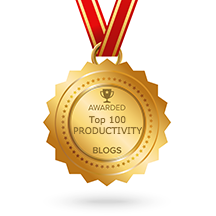While this combination of process and tools works, I have realized that as the project list gets longer, the task list expands, and the meetings and other opportunities for capturing notes increases, there are additional issues I need to address. These include getting captured information from one system to another. And incorporating other systems (email and calendar) into this process.
As part of my ongoing research into the best solution for me, I reached out to a few peers to see what they do.
Here are some ideas I heard.
1) Take time in the moment
This was probably the most mentioned idea.
- Take time right now to transfer items from your email or notes to your calendar or project/task list
- If you are in a meeting and don’t have time right now, stop on way to next meeting and make the transfer
- Don’t worry about adding all the details, just get the basics listed
- Use a system with a quick capture/entry feature (Omnifocus has a quick capture feature, the Inbox)
- Plan to come back later and flesh out the details
2) Highlight for later recall
This was another great idea. This makes it easier to later find and recall the action items, dates, and potential projects for completion later.
- Find a way within your system to flag or highlight the important information including actions items, meeting requests, etc.
- When using paper you can circle it, put stars in front of it, or use some other type of notation or code to signify what it is. There are notebooks designed specifically with space for special notations.
- When using software, learn the features of the software. Many have the ability to add highlights, bookmarks, flags, and notes to mark critical information.
- Never leave a meeting or conversation, or close an email or book without formally highlighting things you want to recall later
3) Review often
This idea was key. Schedule periodic reviews.
- Set aside time periodically to review your notes, project lists, task lists and calendar
- Look for open items, missing items, progress, and completion
- Flesh out the details for quick captured items
- Use the time to look more strategically at your lists
- Determine the right frequency for your projects
I have begun to add each of these ideas into my process. Each one requires both discipline and thought. My goal is to work on incorporating them until they are integral pieces of the process.
Let me know what ideas you have for these issues. Next month I will dive further into idea #3, Review Often.











 This work is licensed under a
This work is licensed under a
No comments:
Post a Comment